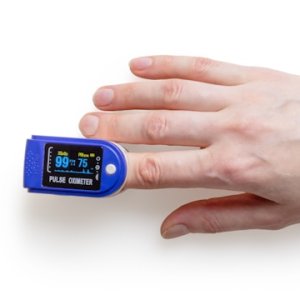
Design of Patient-Centric Medical Devices Requires Collaboration
 By Sofía Garduño | Journalist & Industry Analyst -
Wed, 08/31/2022 - 11:59
By Sofía Garduño | Journalist & Industry Analyst -
Wed, 08/31/2022 - 11:59
The health sector is acquiring a patient-centric perspective as stakeholders are recognizing the need for consumer participation, while patients demand a seat in the decision-making table. Authorities, health professionals and patients are now part of the same ecosystem, which implies a commitment to continuous education on the latest trends. Although the shift towards patient-centric business models aims to increase access to health services, regulations and lack of information is hampering this approach.
Currently, 85 percent of companies plan to increase their investment in patient-centric capabilities over the next 18 months, according to Accenture. A patient-centric approach increases engagement, enhances understanding among patients and allows health providers to make better decisions regarding a patient’s health, as reported by Mercury Healthcare.
Manufacturers of medical devices have acknowledged their responsibility to boost the patient-centric approach across the sector and have committed to educate the multiple actors that partake in shaping the health industry. “We have a responsibility to educate the whole sector on this matter, not only doctors,” said Agustín Zabulanes, Country Director, BSCI.
Authorities, health professionals and, most importantly, patients have a right and obligation to access information that will allow them to make better decisions regarding healthcare. Authorities have to understand how this approach improves healthcare through the provision of services based on value, which can reduce costs and improve efficiency. Meanwhile, health professionals ought to be educated in the new technological trends such as AI and machine learning. Technology is no longer an option, said Jaime Castro Palma, General Director, QbD.
“Health professionals have to understand the differentiation among concepts. Although they have to be involved in conceptualization, they do not have to become experts,” said Montserrat Galindo, Market Access Leader, Masimo.
After the pandemic, the adoption of technology accelerated. The digital progress that was expected for the upcoming 10 years was achieved in only one. This scenario is forcing health professionals to be part of the technological transformation to adapt to the digital transition.
“Health professionals have to be involved in this process to survive because there are specialties that are being threatened, such as radiology. AI is now part of imaging, which supports diagnosis. In the future, it will be possible for machines to provide a diagnosis. Adapting to technology is essential for survival,” said Zabulanes.
Digitalization and technology facilitate the job of health professionals and reduce human error, but technology is not expected to replace doctors. “Machines are not going to replace doctors. The only health professionals that are going to disappear are those that do not acquire technology and waste the invaluable support that technology offers them by helping them gain time and have more precision,” said Alejandro Paolini, Managing Director, Siemens Healthineers.
The patient-centric approach is also transforming the patient into a well-informed consumer. After the pandemic, people realized that everyone can require medical attention at any time and that they have to be committed to their own health and wellbeing. “The patient used to be a “captive” but now the patient has become an informed consumer who participates in decisions and gets involved thanks to digitization and access to information,” said Paolini.
Patients are taking advantage of technologies to be better informed, sometimes arriving at their medical appointment with a diagnosis in mind. Additionally, patients are using data to make better decisions based not only on costs but on results, which is impacting the confidence and trust of patients, according to Galindo.
Although the patient-centric approach is increasing in popularity, it has many challenges ahead. In the public health sector, regulations are slowing down the introduction of new technologies, limiting access. In this sector, innovations arrive after four years of they are introduced to the market due to the obstacles that regulations impose. Meanwhile, in the private sector the promotion of health insurance has to be prioritized to increase access to health services and innovation. Mexico has the lowest rate of medical insurance penetration in Latin America.
To face this scenario, decision makers are working to give educational, financial and data solutions. “We look for and offer evidence of economic impact and strive to strengthen the relationship with the government. We are also working for the education of patients, health workers and even administrators so they can be facilitators for access to technologies. Likewise, it is important to provide access to solutions through a simple system so financing options are known and more people have access to treatment,” said Zabulanes.
















